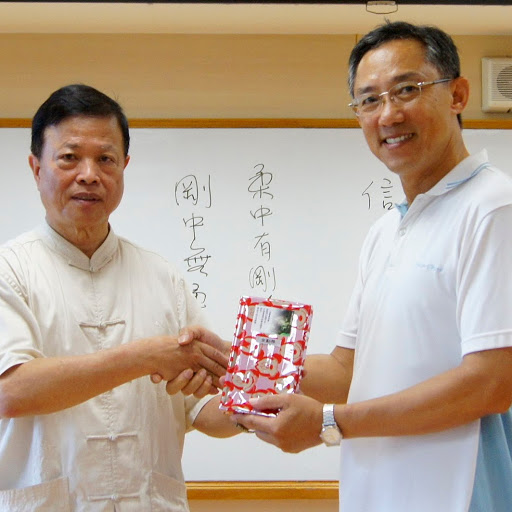Dick Isabel H Liu
age ~85
from Sunnyvale, CA
- Also known as:
-
- Dick Isabel Liu
- Dick A Liu
- Dick L Liu
- Dick I Liu
- Phone and address:
-
961 Reed Ave, Sunnyvale, CA 94086
4087362670
Dick Liu Phones & Addresses
- 961 Reed Ave, Sunnyvale, CA 94086 • 4087362670
- 10250 Yoshino Pl, Cupertino, CA 95014 • 4082552804
- Santa Clara, CA
- San Jose, CA
- Northridge, CA
- Moorpark, CA
Name / Title
Company / Classification
Phones & Addresses
President
WORLD FOCUS INDUSTRIAL INC
835 N Glendora Ave, Glendora, CA 91741
President
SOFTWARE911, INC
Nonclassifiable Establishments · Whol Computers/Peripherals
Nonclassifiable Establishments · Whol Computers/Peripherals
2107 N 1 St SUITE 200, San Jose, CA 95131
President
ARGIO PARTNERS, INC
34140 Audrey Ct, Fremont, CA 94555
President
LEAN SOFTWARE CORPORATION
4340 Stevens Crk Blvd, San Jose, CA 95129
Us Patents
-
High Performance Design Rule Checking Technique
view source -
US Patent:8352887, Jan 8, 2013
-
Filed:Dec 3, 2010
-
Appl. No.:12/960086
-
Inventors:Zuo Dai - Ontario, CA
Dick Liu - Saratoga CA, US
Ming Su - Nepean, CA -
Assignee:Synopsys, Inc. - Mountain View CA
-
International Classification:G06F 17/50
G06F 9/455 -
US Classification:716 52, 716 53, 716112
-
Abstract:Roughly described, a design rule data set is developed offline from the design rules of a target fabrication process. A design rule checking method involves traversing the corners of shapes in a layout region, and for each corner, populating a layout topology database with values that depend on respective corner locations. After the layout topology database is populated, the values are compared to values in the design rule data set to detect any design rule violations. Violations can be reported in real time, while the user is manually editing the layout. Preferably corner traversal is performed using scan lines oriented perpendicularly to edge orientations, and scanning in the direction of the edge orientations. Scans stop only at corner positions and populate the layout topology database with what information can be gleaned based on the current scan line. The different scans need not reach each corner simultaneously.
-
High Performance Drc Checking Algorithm For Derived Layer Based Rules
view source -
US Patent:8448097, May 21, 2013
-
Filed:Aug 16, 2011
-
Appl. No.:13/211211
-
Inventors:Zuo Dai - Ottawa, CA
Dick Liu - Saratoga CA, US
Ming Su - Nepean, CA -
Assignee:Synopsys, Inc. - Mountain View CA
-
International Classification:G06F 17/50
G06F 9/455 -
US Classification:716 52, 716 53, 716112
-
Abstract:Roughly described, a design rule data set includes rules on derived layers. The rules are checked by traversing the corners of physical shapes, and for each corner, populating a layout topology database with values gleaned from that corner location, including values involving derived layers. After the layout topology database is populated, the values are compared to values in the design rule data set to detect any design rule violations, including violations of design rules defined on derived layers. Violations are reported in real time during manual editing of the layout. Preferably corner traversal is performed using scan lines oriented perpendicularly to edge orientations, scanning in the direction of the edge orientations. Scans stop only at corner positions on physical layers, and populate the layout topology database with what information can be gleaned based on the current scan line, including information about derived layers. The scans need not reach corners simultaneously.
-
System And Method For Distributed Knowledge Management
view source -
US Patent:20020055914, May 9, 2002
-
Filed:Mar 1, 2001
-
Appl. No.:09/798055
-
Inventors:Dick Liu - Saratoga CA, US
Jane Hsu - Palo Alto CA, US
Raymond Chong - Cupertino CA, US
Mark Chilcott - Fremont CA, US -
International Classification:G06F017/00
-
US Classification:706/050000
-
Abstract:A system and method for distributed knowledge management. In one embodiment, the system includes a hosted application through which an entity administers a knowledge base (KB). An entity can be, for example, a manufacturer or a reseller of any kind. Administering a KB includes receiving a request for a knowledge item from a user of the system. A user can be an entity or a customer of an entity. Administering further includes responding to the request, which involves accessing knowledge items in at least one of multiple KBs that may be administered by multiple entities. Administering further includes publishing the request, which includes making the request and a response to the request selectively available to different users of the system based upon different levels of privilege assigned to each of the users of the system.
-
Low-Overhead Multi-Patterning Design Rule Check
view source -
US Patent:20130074024, Mar 21, 2013
-
Filed:Nov 13, 2012
-
Appl. No.:13/675970
-
Inventors:Scott I. Chase - Pleasanton CA, US
Zuo Dai - Ottawa, CA
Dick Liu - Saratoga CA, US
Ming Su - Nepean, CA -
International Classification:G06F 17/50
-
US Classification:716112
-
Abstract:Roughly described, a system enables quick and accurate depiction to a user of multi-patterning layout violations so that they may be corrected manually and in real time, and without interfering with normal manual editing process. In one embodiment, the system involves iteratively building tree structures with nodes identifying islands and arcs identifying multi-patterning spacing violations between the connected islands. The system detects coloring violations during the building of these tree structures, using the relationships previously inserted. The coloring violations preferably are reported to a user in the form of visual indications of the cycles among the candidate spacing violations, with the candidate spacing violations also themselves indicated visually and individually. The user can see intuitively how to move the islands around, and in which directions and by what distance, in order to remove a multi-patterning spacing violation and thereby break the cycle.
-
High Performance Design Rule Checking Technique
view source -
US Patent:20130132919, May 23, 2013
-
Filed:Dec 19, 2012
-
Appl. No.:13/719872
-
Inventors:ZUO DAI - ONTARIO, CA
DICK LIU - SARATOGA CA, US
MING SU - NEPEAN, CA -
Assignee:SYNOPSYS, INC. - MOUNTAIN VIEW CA
-
International Classification:G06F 17/50
-
US Classification:716112
-
Abstract:Roughly described, a design rule data set is developed offline from the design rules of a target fabrication process. A design rule checking method involves traversing the corners of shapes in a layout region, and for each corner, populating a layout topology database with values that depend on respective corner locations. After the layout topology database is populated, the values are compared to values in the design rule data set to detect any design rule violations. Violations can be reported in real time, while the user is manually editing the layout. Preferably corner traversal is performed using scan lines oriented perpendicularly to edge orientations, and scanning in the direction of the edge orientations. Scans stop only at corner positions and populate the layout topology database with what information can be gleaned based on the current scan line. The different scans need not reach each corner simultaneously.
-
High Performance Design Rule Checking Technique
view source -
US Patent:20130159949, Jun 20, 2013
-
Filed:Dec 18, 2012
-
Appl. No.:13/718527
-
Inventors:Zuo DAI - Ontario, CA
Dick LIU - Saratoga CA, US
Ming SU - Nepean, CA -
Assignee:SYNOPSYS, INC. - Mountain View CA
-
International Classification:G06F 17/50
-
US Classification:716112
-
Abstract:Roughly described, a design rule data set is developed offline from the design rules of a target fabrication process. A design rule checking method involves traversing the corners of shapes in a layout region, and for each corner, populating a layout topology database with values that depend on respective corner locations. After the layout topology database is populated, the values are compared to values in the design rule data set to detect any design rule violations. Violations can be reported in real time, while the user is manually editing the layout. Preferably corner traversal is performed using scan lines oriented perpendicularly to edge orientations, and scanning in the direction of the edge orientations. Scans stop only at corner positions and populate the layout topology database with what information can be gleaned based on the current scan line. The different scans need not reach each corner simultaneously.
-
Real Time Drc Assistance For Manual Layout Editing
view source -
US Patent:20130275938, Oct 17, 2013
-
Filed:May 16, 2013
-
Appl. No.:13/895994
-
Inventors:Randy Bishop - Pleasanton CA, US
Zuo Dai - Ottowa, CA
John Hapli - Greely, CA
Dick Liu - Saratoga CA, US
Ming Su - Nepean, CA -
International Classification:G06F 17/50
-
US Classification:716139
-
Abstract:Roughly described, while manually dragging shapes during IC layout editing, editing operations determine which edges of which shapes are moving at what speed ratios. Based on the edge information and the DRC rules, the system calculates and keeps track of the minimum of the maximum distance the edges are allowed to move with the cursor without violating DRC rules, in four linear directions and all corner directions. Once a next cursor destination point is known, a DRC clean destination point is calculated based on the linear and corner bounds. If the next cursor position is beyond a the push-through distance ahead of the new DRC clean point, the editing objects are moved to the user's destination point. Otherwise, the editing objects are moved to the new DRC clean destination point, thereby stopping movement at that point.
-
Real Time Drc Assistance For Manual Layout Editing
view source -
US Patent:20130298096, Nov 7, 2013
-
Filed:May 24, 2013
-
Appl. No.:13/902390
-
Inventors:Randy Bishop - Pleasanton CA, US
Zuo Dai - Ottowa, CA
John Hapli - Greely, CA
Dick Liu - Saratoga CA, US
Ming Su - Nepean, CA -
International Classification:G06F 17/50
-
US Classification:716112
-
Abstract:Roughly described, while manually dragging shapes during IC layout editing, editing operations determine which edges of which shapes are moving at what speed ratios. Based on the edge information and the DRC rules, the system calculates and keeps track of the minimum of the maximum distance the edges are allowed to move with the cursor without violating DRC rules, in four linear directions and all corner directions. Once a next cursor destination point is known, a DRC clean destination point is calculated based on the linear and corner bounds. If the next cursor position is beyond a the push-through distance ahead of the new DRC clean point, the editing objects are moved to the user's destination point. Otherwise, the editing objects are moved to the new DRC clean destination point, thereby stopping movement at that point.
Flickr
Youtube
Plaxo

dick liu
view sourceAAPI
Classmates

Hong Kong International H...
view sourceGraduates:
Richard Liu (1988-1990),
Bernie Liu (1997-1998)
Bernie Liu (1997-1998)
Googleplus

Dick Liu

Dick Liu

Dick Liu

Dick Liu

Dick Liu

Dick Liu
Get Report for Dick Isabel H Liu from Sunnyvale, CA, age ~85













